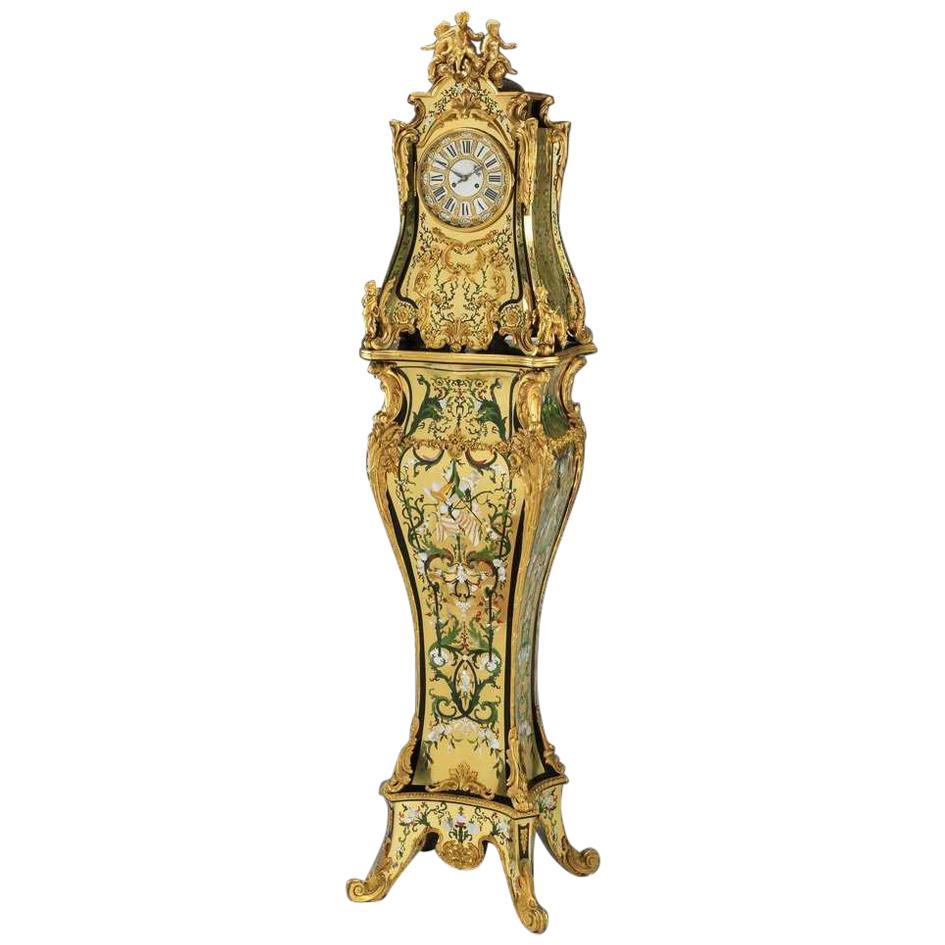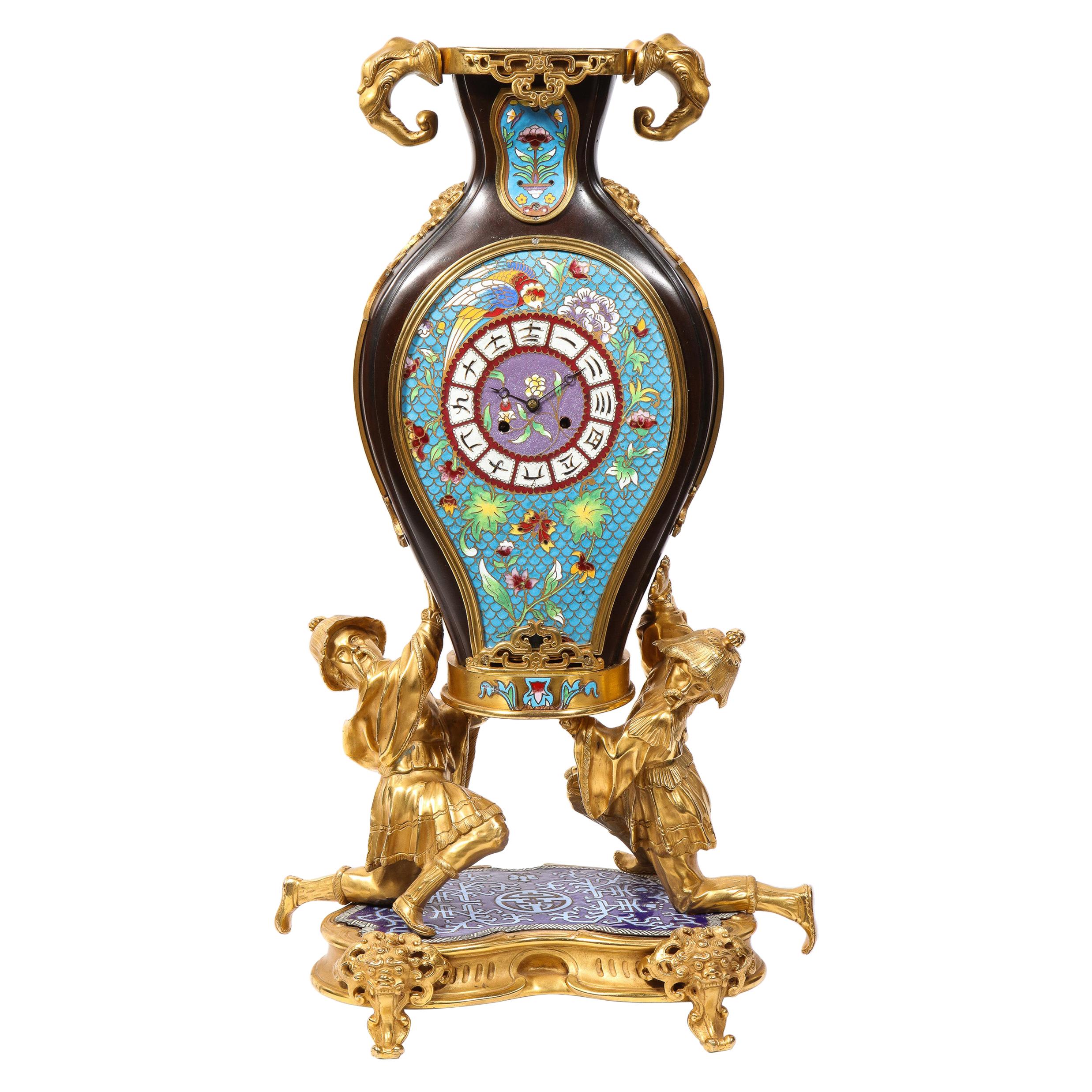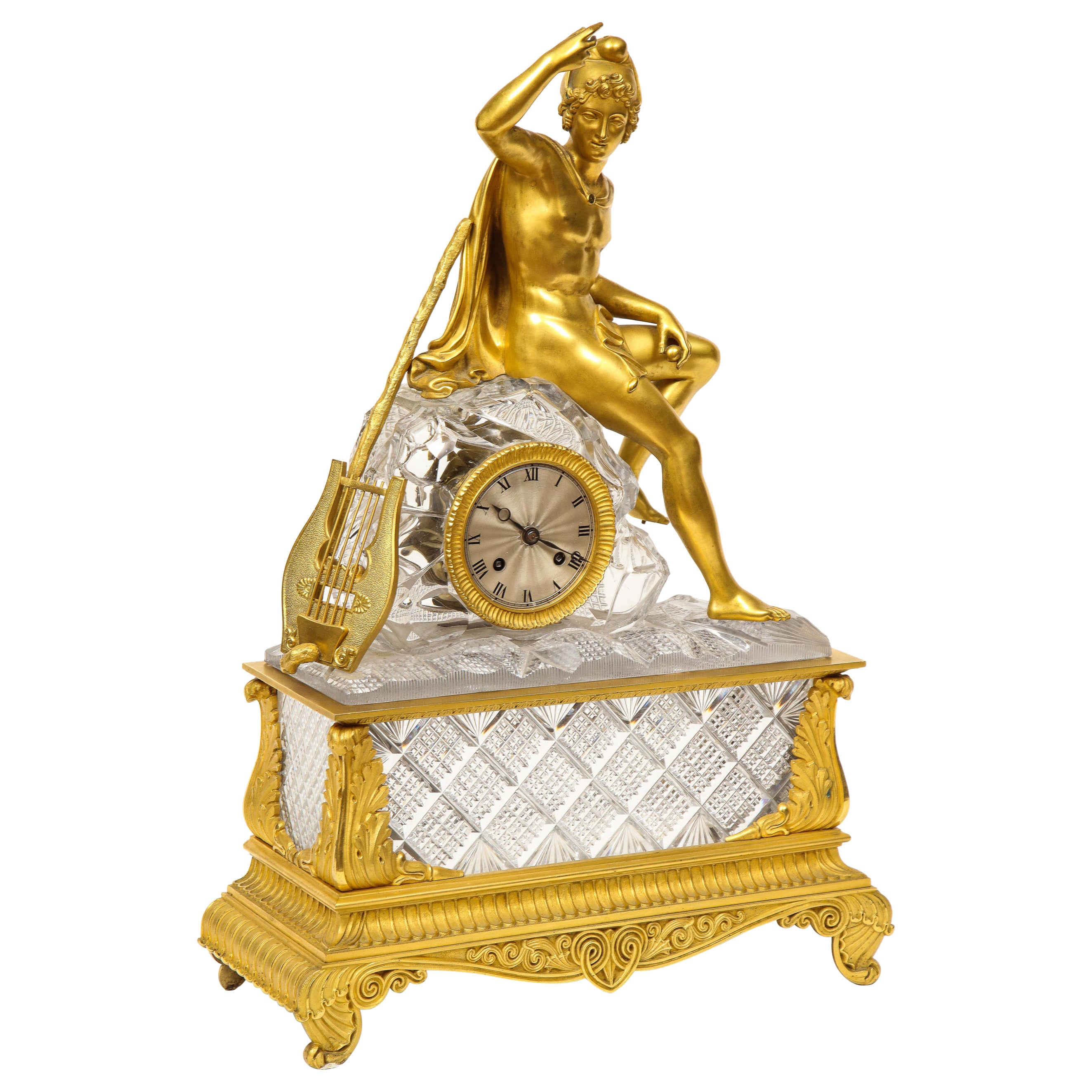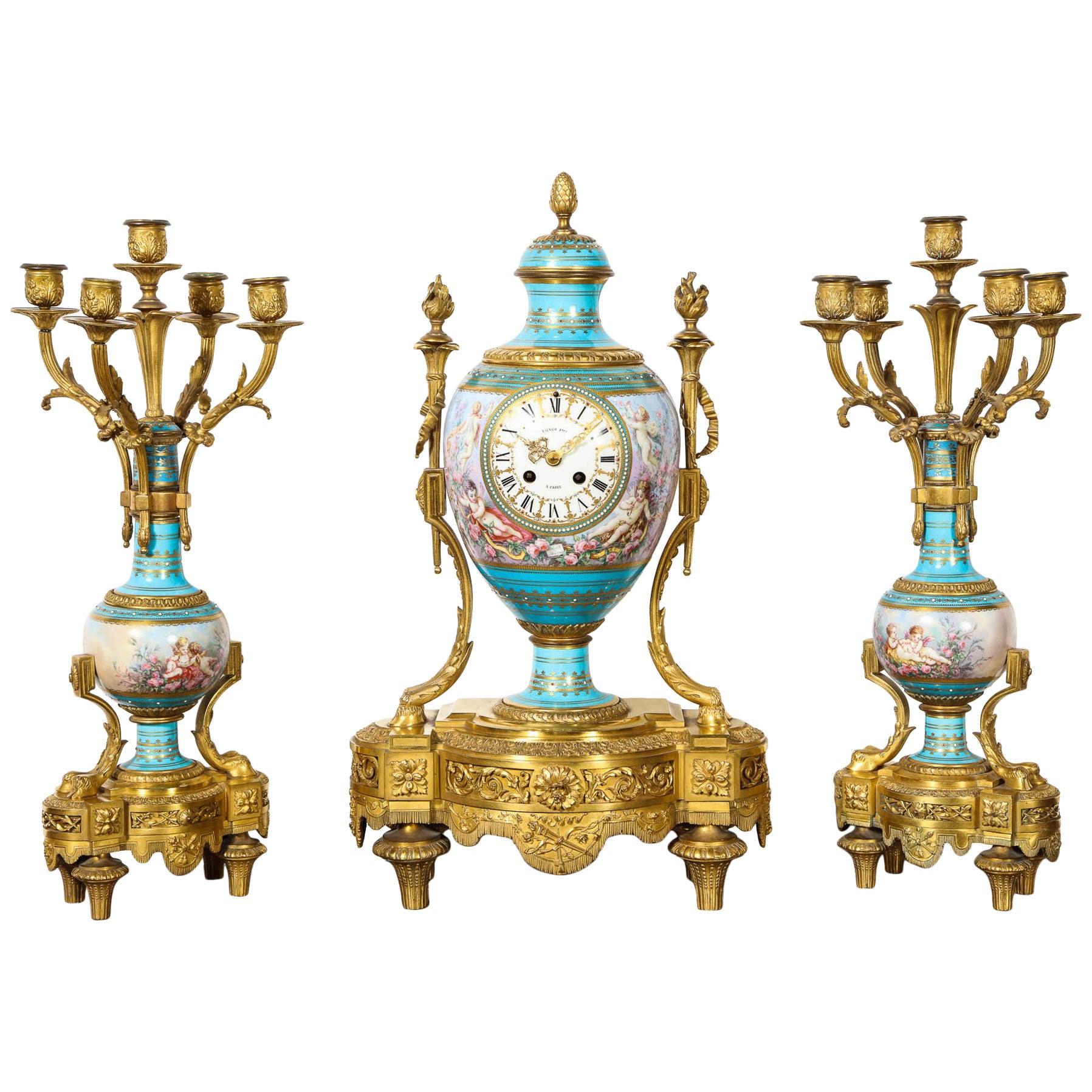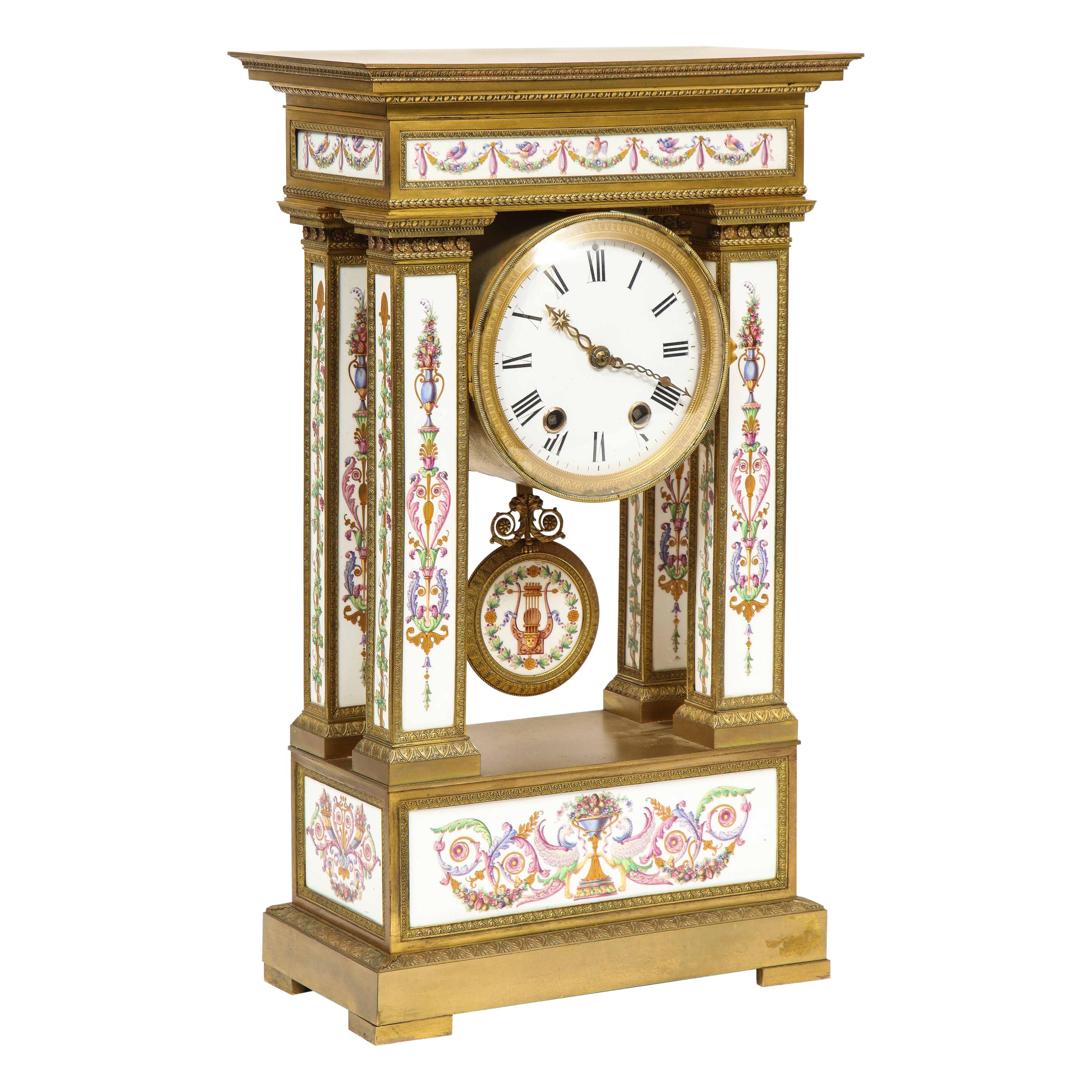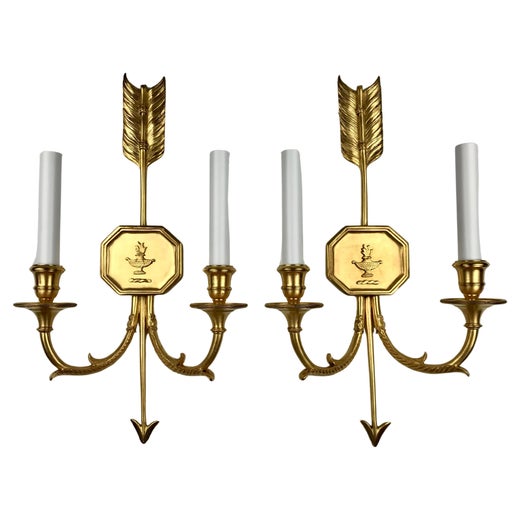Edward F. Caldwell, An Extremely Fine and Rare Ormolu-Mounted Malachite Clock
About the Item
- Creator:Edward F. Caldwell & Co. (Maker)
- Dimensions:Height: 21 in (53.34 cm)Width: 9 in (22.86 cm)Depth: 7 in (17.78 cm)
- Materials and Techniques:
- Place of Origin:
- Period:
- Date of Manufacture:circa 1915
- Condition:Wear consistent with age and use.
- Seller Location:New York, NY
- Reference Number:1stDibs: LU1798225095982
Edward F. Caldwell & Co.
Edward F. Caldwell & Co. was among America’s preeminent lighting manufacturers of the late 19th to the mid-20th centuries, illuminating the halls and ceilings of some of the most notable buildings in the United States. In addition to St. Patrick’s Cathedral in New York City and the White House in Washington, D.C., the company’s masterful light fixtures also adorn the homes of some historically prominent figures, such as J.P. Morgan and Phillip Lehman.
The firm was founded in 1895 by American Edward F. Caldwell and Victor F. von Lossberg, a Latvia native who was raised in Russia. The founders became acquainted while working at Archer & Pancoast Manufacturing Company of New York, which produced gas lighting fixtures.
In 1901 Edward F. Caldwell & Co. opened a foundry, where the owners and the lighting artisans they recruited could explore a range of metalworking techniques and design styles. Caldwell and von Lossberg quickly rose to the top of the electric light manufacturing business with their shared vision, choosing to deliver quality elegant fixtures that frequently drew on historic European designs. The firm produced magnificent lighting pieces, as well as finely crafted decorative objects and mirrors. Their neoclassical designs borrowed heavily from Baroque and Rococo styles — Edward F. Caldwell & Co. also devised Art Deco fixtures during the 1920s — and favored bronze, silver, iron, copper and brass as their primary materials.
With construction on the rise in New York in the early 1900s, not many outfits could take on large-scale lighting contracts. With over 1,000 employees, Edward F. Caldwell & Co. could take on heavy commissions.
After Caldwell died in 1914, von Lossberg carried the company until he died in 1942. Edward F. Caldwell & Co. closed its doors owing to financial troubles in 1959.
Today manufacturer’s work can be seen all across New York City — including at the Bank of Manhattan and the famous Waldorf Astoria hotel — and Edward F. Caldwell & Co. creations are highly sought after by lighting and decor enthusiasts.
On 1stDibs, explore a selection of vintage Edward F. Caldwell & Co. table lamps, chandeliers and pendants, sconces and floor lamps.
- ShippingRetrieving quote...Ships From: New York, NY
- Return PolicyA return for this item may be initiated within 7 days of delivery.
- Palatial & Rare Napoleon III French Ormolu and Patinated Bronze Clock, DetoucheBy C. DetoucheLocated in New York, NYA palatial, extremely rare, and important Napoleon III French ormolu and patinated bronze regulateur de parquet clock, by Louis-Constantin Detouche, Paris, circa 1850. The clock case made form the finest French ormolu, with 2 very large patinated bronze seated putti The white enamel dial Signed C. DETOUCHE/ PARIS. The clock movement is numbered 7064 and stamped with maker’s stamps C. Detouche RUE st. MARTIN and C. DETOUCHE 158 R. St MARTIN 160, with medaille d’argent stamp, on a serpentine part ebonized mahogany plinth. At over six feet tall, the present clock is impressive in scale and rare in Detouche’s oeuvre. While other large clocks were produced by the firm, few of this scale are so overtly decorative and usually incorporate greater mechanical complication. For example, a gilt bronze astronomical regulator clock...Category
Antique 19th Century French Napoleon III Grandfather Clocks and Longcase...
MaterialsBronze, Ormolu
- Unusual French Ormolu and Jeweled Clock Made for the Ottoman Turkish MarketLocated in New York, NYAn Unusual French Louis Philippe Ormolu and Jeweled Clock Made for the Ottoman Turkish Market, circa 1840. The scrollwork case suspending a ribbon-tie...Category
Antique 19th Century French Islamic Mantel Clocks
MaterialsBronze, Ormolu
- Rare & Important Spanish Damascene, Iron, Steel, Gold Inlaid Clock, Eibar, SpainBy Plácido Zuloaga 1Located in New York, NYA highly rare and important Spanish damascene, "Egyptian Revival" iron, steel, gold, and silver inlaid clock, circa 1900 Exceptional quality, damascened in gold and silver inlay. Measures: 10" high x 16" wide x 9" deep. Definitely made by one of Placido Zuloaga...Category
Early 20th Century Spanish Egyptian Revival Mantel Clocks
MaterialsSteel, Iron
- An Exquisite and Rare French Louis XVI Style Ormolu-Mounted Bloodstone InkwellLocated in New York, NYAn Exquisite and Rare French Louis XVI Style Ormolu-Mounted Bloodstone Inkwell, circa 1875. A truly exceptional and jewel like quality inkwell encrier, made with the finest ormolu, mounted on bloodstone. A true collectors and one of a kind piece. Revival of the ancient régime in the late 19th century was paramount to the French furniture and bronze casting firms of the Belle Epoque. Imitation in the highest regard and replication of those tastes and styles was prevalent throughout the Paris Faubourg, where the most talented bronziers and ébénistes established their workshops. The present inkwell encrier recalls the late 18th century's obsession with hardstones - a taste expounded above all by the duc d'Aumont and, subsequently Marie-Antoinette. Such hardstone-mounted pieces, reminiscent of Renaissance schatzkammer objects, enjoyed a revived popularity at the end of the 18th century through the impetus of both the marchands-mercier and, more importantly, the hôtel des Menus-Plaisirs, where the duc d'Aumont himself established a workshop in 1770 specializing in the cutting and polishing of precious hardstones. This exceptional inkwell encrier, sumptuously-mounted with finely chased gilt-bronzes, incorporates a highly-prized material such as bloodstone. Sometimes called the Sunstone, the meaning of Bloodstone comes entangled in fascinating history. The Ancient Greeks held the Bloodstone as a gem with glorious powers. They referred to it as Heliotrope, which directly translates to Sunstone. It was believed to have heavenly healing powers gifted by the gods and most certainly when it came to healing all things related to the blood. Even as we move forward into the Middle Ages, the Bloodstone takes another mystical story under its wing. It was believed to be formed from Christ's blood. It was said that during the Crucifixion, a few red spots of his blood dripped...Category
Antique 19th Century French Napoleon III Inkwells
MaterialsBronze, Ormolu
- Placido Zuloaga, an Extremely Rare Spanish Gold and Silver Damascened FrameBy Plácido Zuloaga 1Located in New York, NYPlacido Zuloaga, an extremely rare Spanish gold and silver damascened window frame, circa 1880. The interior is lined and fitted with an orientalist artwork throughout. Signed PZ on the reverse. Placido Zuloaga was a renowned Spanish metalworker and damascene artist known for his exceptional skills in working with gold and silver and for creating intricate and ornate designs on metal surfaces using a technique called damascening. One of Zuloaga's works is this rare gold and silver damascened frame that he created in the late 19th century. The frame is decorated with intricate designs in silver and gold, creating a stunning contrast that is characteristic of Zuloaga's work. The frame is a remarkable example of Zuloaga's artistry and skill, as well as his mastery of the damascening technique. The technique involves inlaying silver or gold wire into the surface of the metal, creating intricate and detailed designs that are both beautiful and durable. Zuloaga's work was highly sought after during his lifetime and is still highly valued today. His pieces are considered to be some of the finest examples of damascene artistry in the world, and his legacy continues to inspire and influence metalworkers and artists today. His works are in private collections and in museums worldwide. Comparative Literature: James D. Lavin, The Art and Tradition of the Zuloagas, Spanish Damascene...Category
Antique 19th Century Spanish Islamic Picture Frames
MaterialsSteel, Iron
- Exceptional White Marble Figural Sculpture Clock, "Nubian Slaying the Lion"Located in New York, NYAn exceptional and monumental white marble figural sculpture clock, "A Nubian Slaying The Lion" by Jean-Joseph Jacquet (Belgian, 1822–1898), c...Category
Antique 19th Century Belgian Figurative Sculptures
MaterialsMarble
- An Extremely Fine and Rare 19th Century Ormolu Cartel ClockBy Samuel MartiLocated in Amersham, GBAn exquisite Louis XV style gilt and patinated bronze cartel clock. The eight-day two train bell striking movement, with vertically planted platform cylinder escapement and stamped with S. Marti et Cie MEDAILLE D'ARGENT. 1889 roundel and serial number 647 to backplate. The dial formed as a deep blue and gold flecked enamel dome applied with gilt Roman numerals and stars set within billowing clouds interspersed with sunburst rays. Applied with three patinated bronze cherubs in flight, around the dial attending to a floral garland. Amongst the clouds can be found a pair of doves, a horn and arrows, a quiver and bow. This coupled with the cherubs and flower garland would suggest this clock was made as a love token or wedding present. The symbolism of love, marriage and fertility, the cherubs representing the three Greek Erotes...Category
Antique 1890s French Louis XV Wall Clocks
MaterialsBronze, Ormolu
- An Extremely Fine Ormolu Portico Mystery ClockBy Breguet a ParisLocated in Amersham, GBThis extremely rare swinging portico clock by Béchot Paris, in an ormolu case of exquisite quality, finely cast and gilded with its original burnished and chased finish, this clock i...Category
Antique Early 19th Century French Empire Mantel Clocks
MaterialsOrmolu
- Rare and large ormolu mounted malachite mantel clock signed ManièreLocated in London, GBRare and large ormolu mounted malachite mantel clock signed Manière French, 19th Century Height 60cm, width 35.5cm, depth 13cm With an enamel dial signed 'Maniére / A Paris', th...Category
Antique 19th Century French Neoclassical Mantel Clocks
MaterialsMalachite, Ormolu, Enamel
- Edward F. Caldwell & Co. Metal Table ClockBy Edward F. Caldwell & Co.Located in West Palm Beach, FLEdward F. Caldwell & Co. 1851-1914 A gilt bronze, marble, gilt and patinated metal table clock. New York, early 20th century Raised on a marble base, stamped E. F. Caldwell & Co....Category
Early 20th Century Mantel Clocks
- Sienna Marble, Gilt and Patinated Bronze Mantle Clock, Edward F. CaldwellBy Edward F. Caldwell & Co.Located in West Palm Beach, FLE.F. Caldwell & Co., Inc., New York A patinated bronze and yellow Siena marble clock by Edward F. Caldwell & Co., New York, early 20th century, the circular dial with Roman numerals...Category
Antique Late 19th Century Mantel Clocks
MaterialsBronze
- Fine Porcelain Mounted Ormolu Mantel ClockLocated in London, by appointment onlyFrance, circa 1880 The ormolu case mounted with fine painted porcelain scenes of a courting couple. This unusual mauve colour pallet emphasizes the...Category
Antique 19th Century French Napoleon III Mantel Clocks
MaterialsBronze
